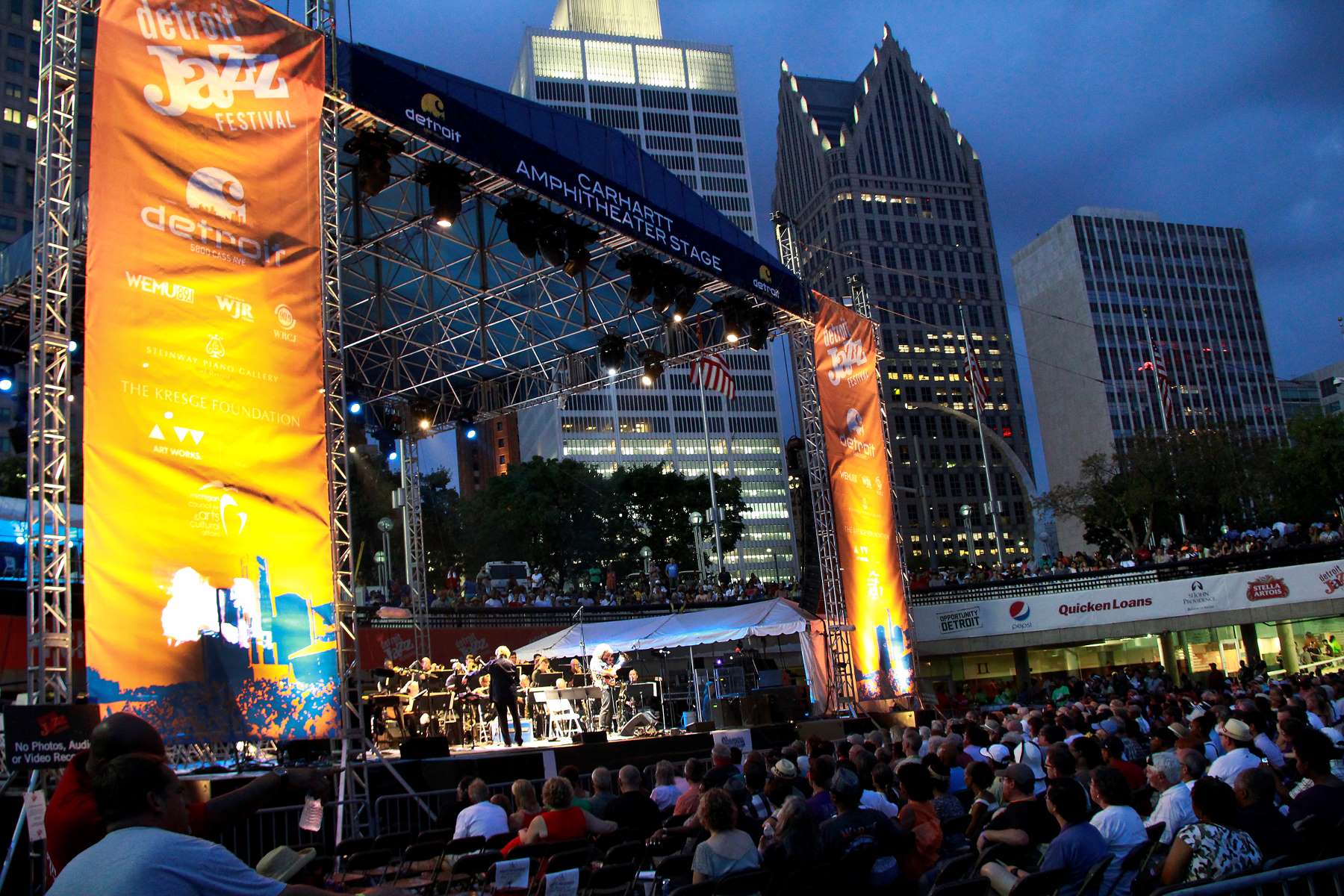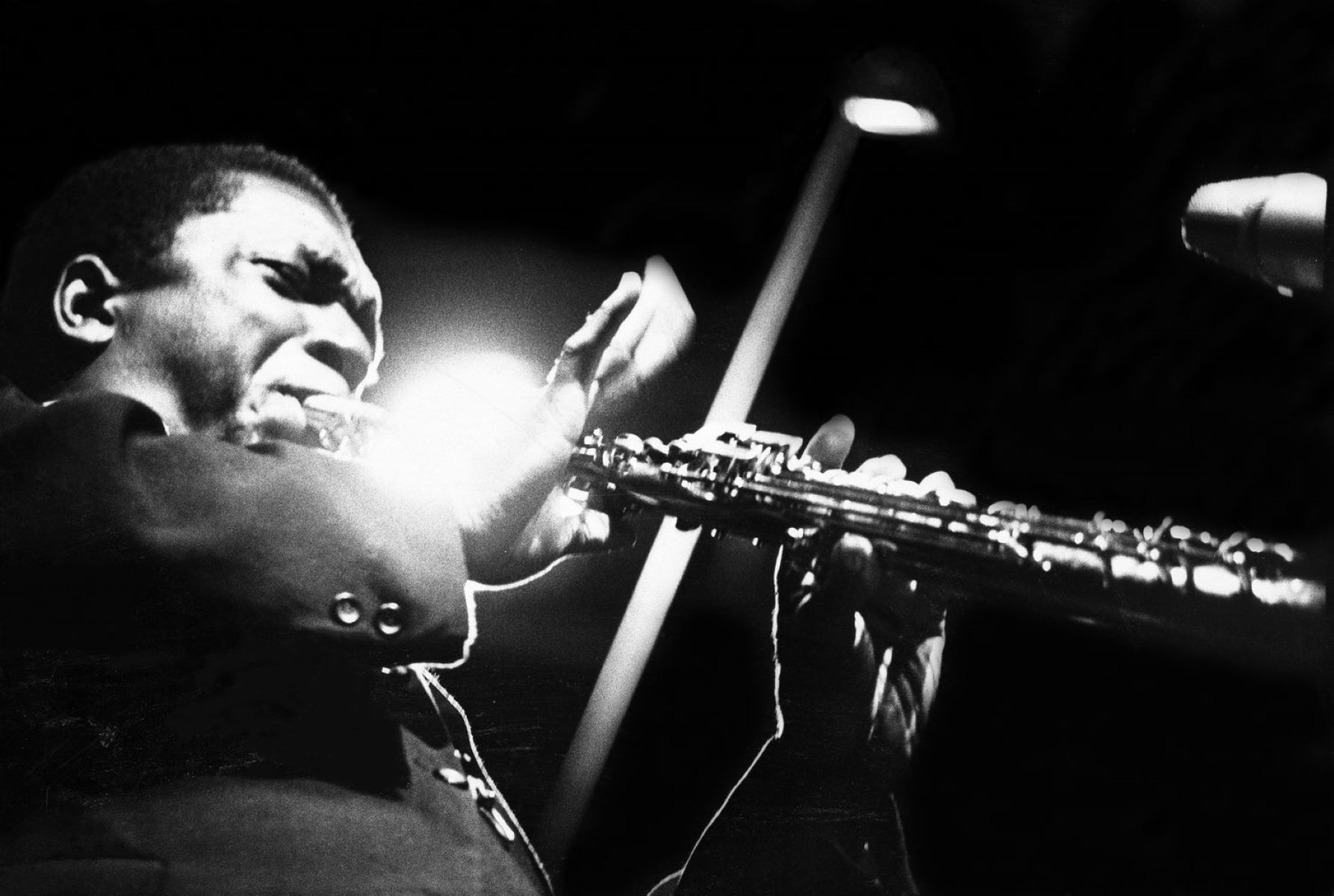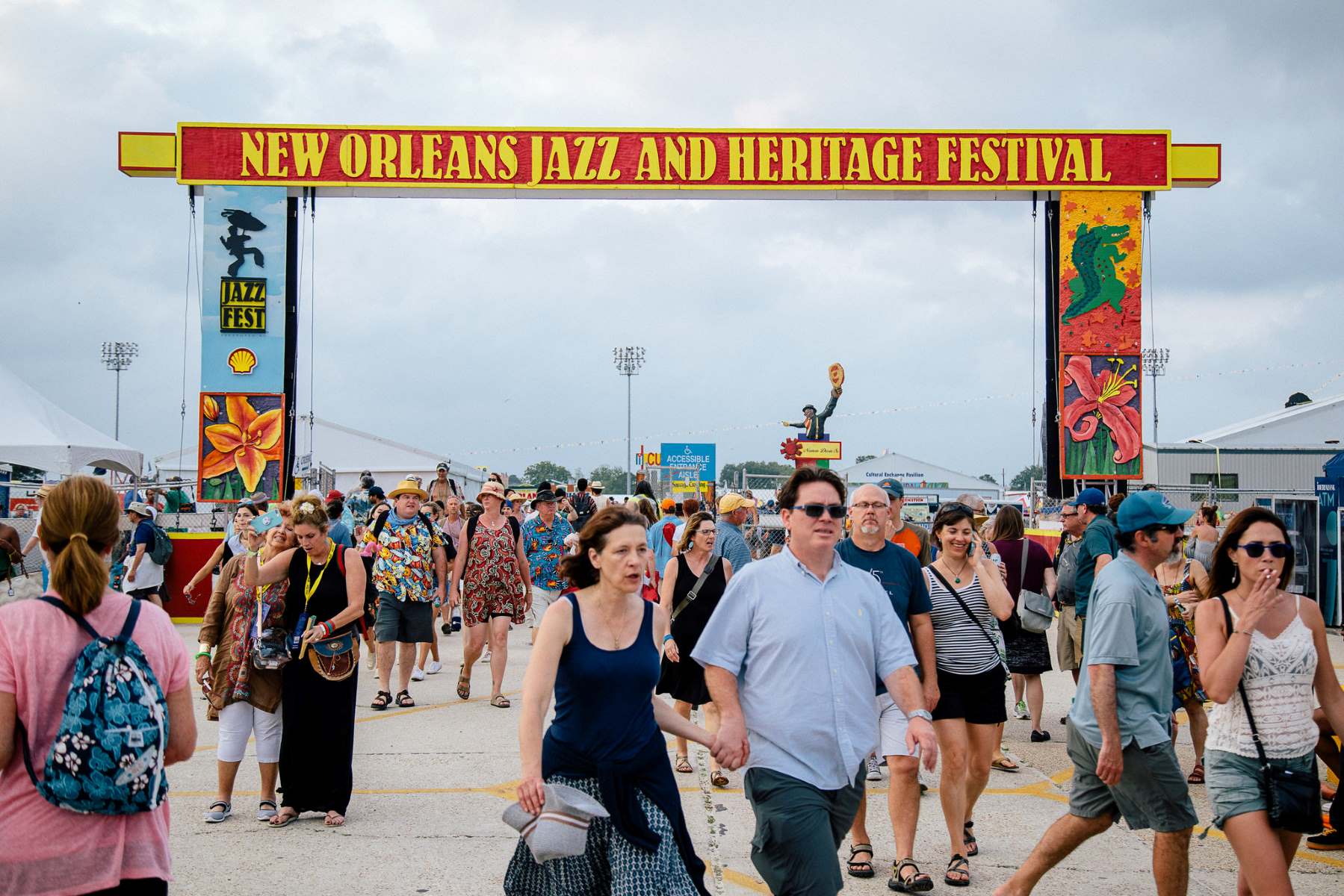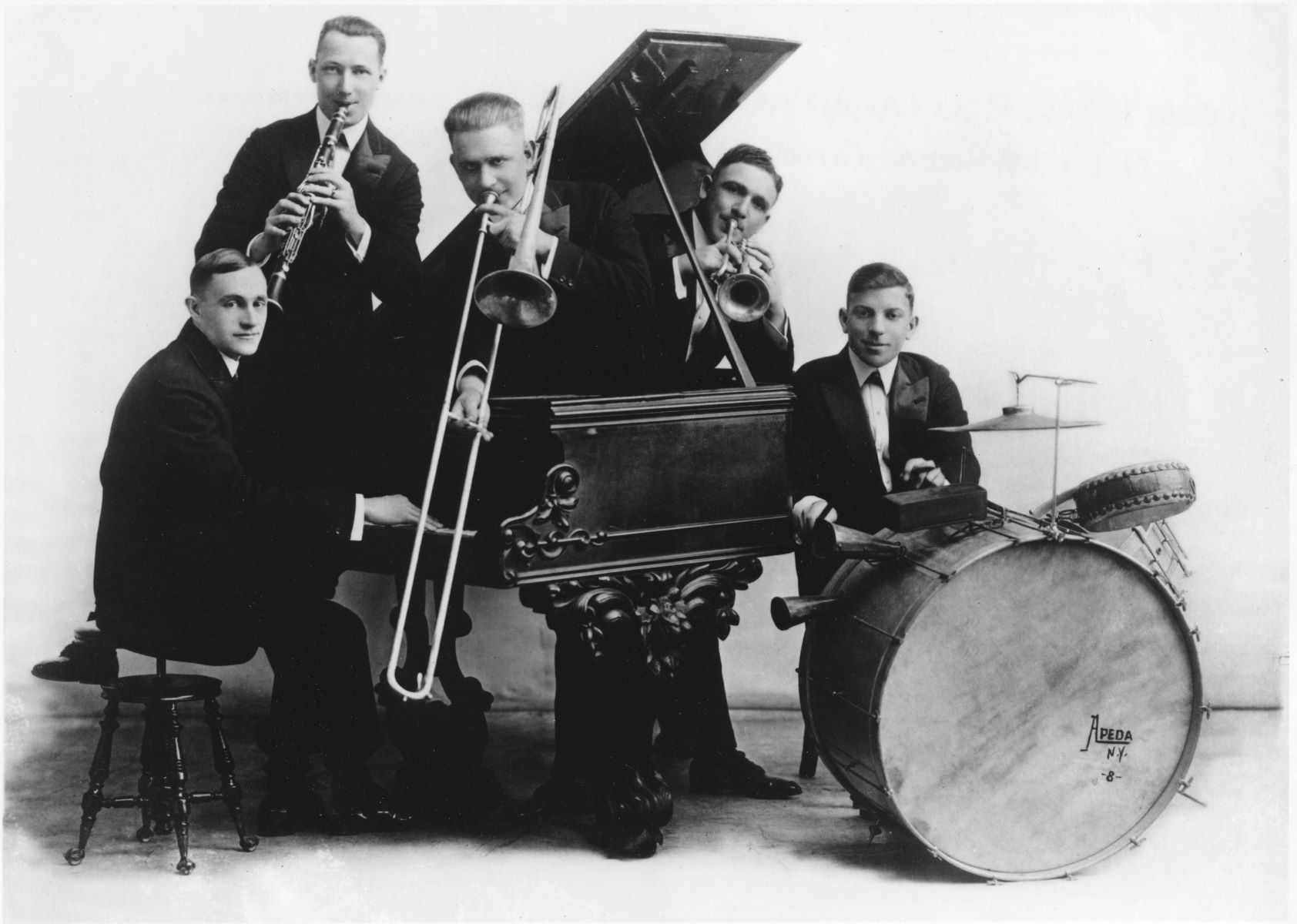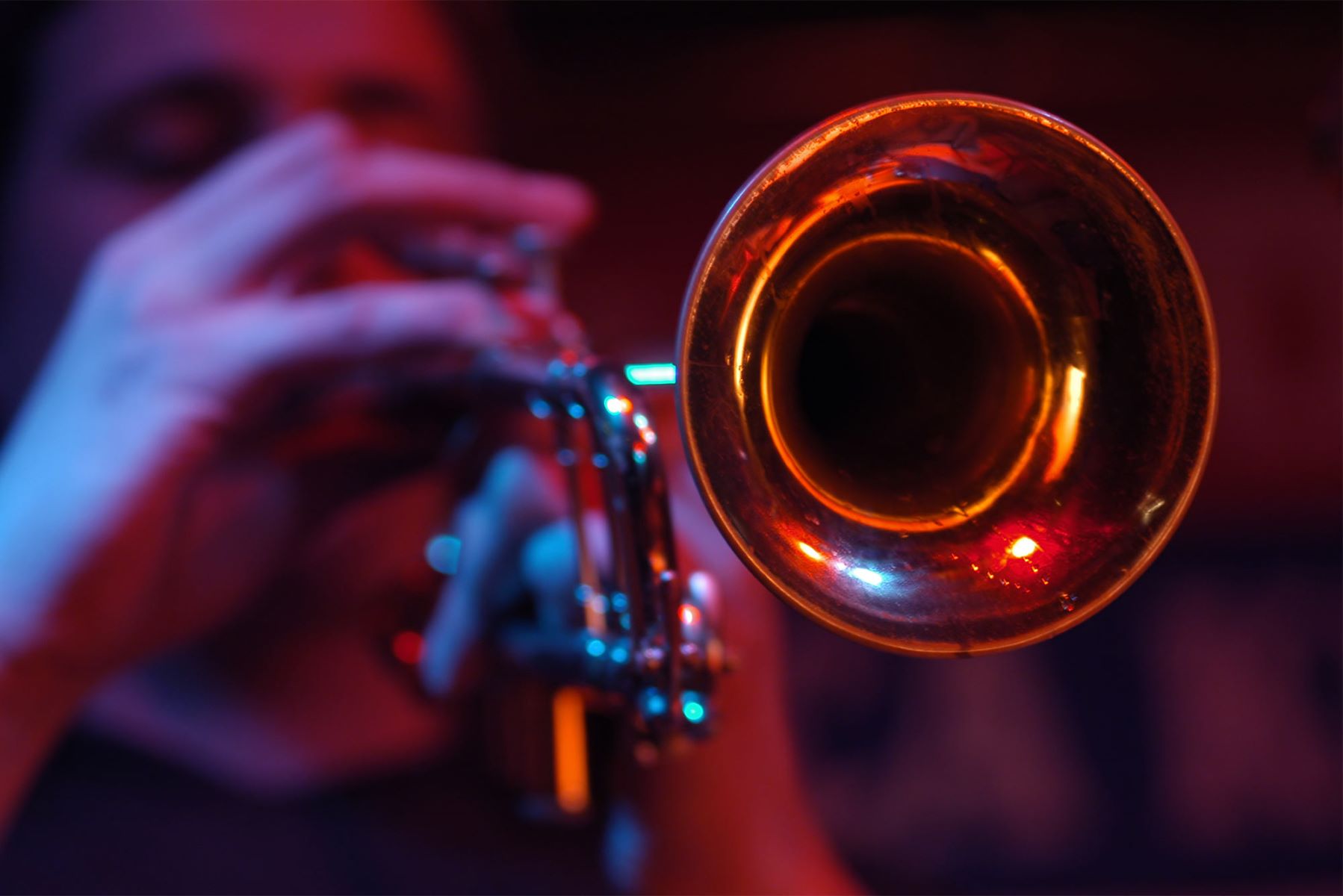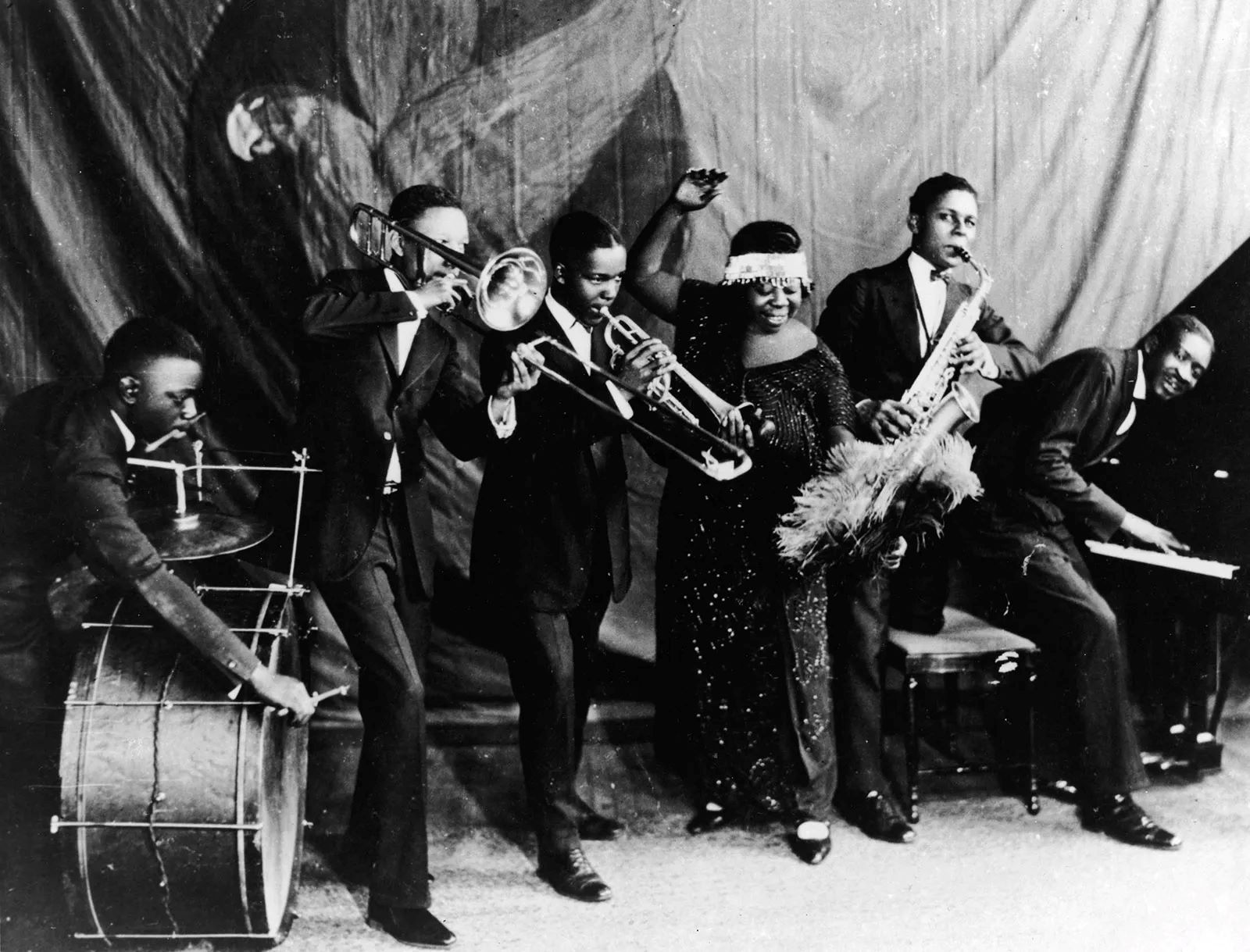

Jazz
When Is Jazz Appreciation Month
Modified: January 29, 2024
Celebrate Jazz Appreciation Month and immerse yourself in the rhythmic melodies of this beloved genre. Discover the rich history and timeless allure of jazz.
(Many of the links in this article redirect to a specific reviewed product. Your purchase of these products through affiliate links helps to generate commission for AudioLover.com, at no extra cost. Learn more)
Table of Contents
Introduction
Jazz Appreciation Month: Celebrating the Artistry and Legacy of Jazz
When it comes to music genres that have had a profound impact on American culture, jazz unquestionably tops the list. Known for its improvisation, syncopation, and soulful melodies, jazz has been embraced by music enthusiasts all around the world. In recognition of its rich history and cultural significance, Jazz Appreciation Month (also known as JAM) takes place every April, serving as a vibrant celebration of this beloved genre.
Established in 2001 by the Smithsonian National Museum of American History, Jazz Appreciation Month aims to promote and preserve jazz as a cherished art form. This month-long tribute allows enthusiasts, musicians, and educators to delve into the captivating stories, diverse styles, and profound influence of jazz music.
Throughout Jazz Appreciation Month, various events, performances, educational activities, and initiatives are organized to honor the jazz community, foster its growth, and raise awareness of its historical and cultural significance. From concerts and jam sessions to museum exhibitions and panel discussions, Jazz Appreciation Month offers a wide array of opportunities for both seasoned jazz aficionados and those who are just beginning to explore the genre.
Beyond its entertainment value, jazz plays a vital role in American culture and history. Originating in the early 20th century in African American communities, jazz provided a voice for marginalized groups and served as a means of cultural expression. The genre’s evolution parallelled significant social and political developments, making it a powerful vehicle for addressing issues and sparking conversations about race, identity, and equality.
Jazz Appreciation Month serves as a platform to recognize the significant contributions of jazz musicians and their impact on the world of music. From the legendary pioneers such as Louis Armstrong, Duke Ellington, and Ella Fitzgerald to modern-day virtuosos like Herbie Hancock and Esperanza Spalding, jazz has been shaped and enriched by countless talented artists throughout its history.
History of Jazz Appreciation Month
The roots of Jazz Appreciation Month can be traced back to the early 1980s when the Smithsonian National Museum of American History established a program called “Celebrate Jazz.” This initiative aimed to honor the rich heritage of jazz and raise awareness about its cultural significance. It featured performances, lectures, and exhibitions that highlighted the genre’s impact on American society.
In 2001, with the vision of expanding this celebration on a national scale, the Smithsonian launched Jazz Appreciation Month. This month-long tribute was designed to educate, promote awareness, and engage people of all ages in exploring the history, sounds, and influence of jazz.
Since its inception, Jazz Appreciation Month has gained widespread recognition and participation from jazz enthusiasts, musicians, educational institutions, and organizations around the country. It has become an annual tradition where communities come together to dive deep into the world of jazz, celebrate its heritage, and embrace its contemporary expressions.
To honor the genre’s historic significance, April was chosen as the designated month for Jazz Appreciation Month. This decision was influenced by the birthdays of two jazz legends: April 7th, the birthdate of the renowned jazz ambassador and trumpeter Dizzy Gillespie, and April 29th, the birthdate of pioneering jazz pianist and composer Duke Ellington.
Throughout Jazz Appreciation Month, national and local organizations collaborate to curate a diverse range of events and activities. From concerts and festivals to workshops and film screenings, these events engage audiences of all ages and backgrounds, fostering a greater appreciation for jazz music and its cultural impact.
Moreover, the Smithsonian National Museum of American History has played a pivotal role in preserving and promoting jazz heritage during Jazz Appreciation Month. They have curated exhibitions that showcase the legacy of jazz, featuring artifacts, photographs, memorabilia, and interactive displays that immerse visitors in the rich history and artistic achievements of the genre.
In recognition of its cultural and educational significance, Jazz Appreciation Month has received endorsements from the United States Congress, which passed legislation in 2003 to recognize and promote April as Jazz Appreciation Month. This official recognition further highlights the importance of jazz as an art form and its impact on American society.
Through the years, Jazz Appreciation Month has continued to evolve and expand, reaching a broader audience and inspiring the next generation of jazz musicians and enthusiasts. It remains an annual celebration that champions the spirit of jazz, fosters creativity and innovation, and pays homage to its vibrant legacy.
Purpose of Jazz Appreciation Month
Jazz Appreciation Month serves a multitude of purposes, all aimed at celebrating and promoting the artistry, heritage, and impact of jazz music. Let’s explore the key objectives behind this month-long celebration:
1. Cultural Preservation: Jazz Appreciation Month seeks to preserve and honor the cultural heritage of jazz. It recognizes the historical significance of the genre, its roots in African American communities, and its evolution as an American art form. By celebrating jazz, the month acknowledges its contributions to American culture and ensures that its legacy is passed on to future generations.
2. Promoting Awareness: Jazz Appreciation Month aims to raise awareness about the genre, particularly among those who may not have been exposed to jazz before. It provides an opportunity to educate the public about the diverse styles, influential musicians, and significant contributions of jazz to the music world.
3. Engaging the Community: This month-long celebration encourages community involvement in jazz-related events and activities. It brings together jazz enthusiasts, musicians, educators, and organizations to create a sense of unity and shared appreciation for the genre. Through concerts, jam sessions, and workshops, Jazz Appreciation Month fosters a vibrant and inclusive community that embraces the beauty of jazz.
4. Inspiration and Creativity: Jazz Appreciation Month serves as a catalyst for inspiring creativity and innovation in music. By exploring the improvisational nature of jazz, aspiring musicians are encouraged to think outside the box, experiment with their own sound, and embrace the spirit of collaboration and self-expression that jazz embodies.
5. Educational Opportunities: One of the primary goals of Jazz Appreciation Month is to provide educational resources and programs that promote jazz education in schools and communities. Through workshops, masterclasses, and school curriculum integration, students have the chance to learn about the history, theory, and performance techniques of jazz music, ensuring its longevity as an educational tool.
6. Cultural Exchange: Jazz has transcended borders and cultures, influencing music around the world. Jazz Appreciation Month celebrates this global influence by promoting international collaborations, cultural exchanges, and showcasing the diversity of jazz styles from different regions. It highlights the power of music to connect people and bridge cultural divides.
Overall, the purpose of Jazz Appreciation Month is to pay homage to the artistry and legacy of jazz while engaging and inspiring individuals to develop a deeper appreciation for the genre. It aims to preserve its cultural heritage, raise awareness, promote education, and foster a vibrant jazz community that celebrates this timeless form of musical expression.
Significance of Jazz in American Culture
Jazz holds a unique and significant place in American culture, representing the spirit of freedom, creativity, and cultural diversity. It has had a profound impact on various aspects of American society, making it an integral part of the nation’s cultural fabric. Let’s explore the key reasons why jazz holds such significance:
1. Cultural Identity: Jazz is often regarded as a quintessentially American art form. Originating in African American communities in the early 20th century, jazz embodied the resilience, creativity, and expression of marginalized groups. Through its syncopation, improvisation, and blending of diverse musical styles, jazz served as a reflection of the multicultural and multiracial nature of American society.
2. Historical Narrative: Jazz has been deeply intertwined with significant moments in American history. It emerged during the era of segregation, racial inequality, and the Harlem Renaissance, providing a powerful voice for social commentary and cultural pride. Jazz musicians became symbols of resilience, inspiring hope and promoting social change through their music.
3. Musical Innovations: Jazz revolutionized the music industry with its innovative techniques and approaches. From Louis Armstrong’s dazzling trumpet solos to Charlie Parker’s virtuosic improvisation, jazz musicians pushed the boundaries of music theory and performance. They introduced new harmonic structures, complex rhythms, and extended instrumental techniques, shaping the evolution of music across genres.
4. Influence on Popular Music: Jazz has permeated virtually every genre of popular music, including blues, rock, R&B, and hip-hop. Its influence can be heard in the improvisation of guitar legends, the soulful vocal stylings of contemporary artists, and the rhythmic complexity of modern hits. Jazz’s impact continues to reverberate through popular music, showcasing its timeless appeal and adaptability.
5. International Recognition: Jazz is a global language, transcending cultural and geographical boundaries. American jazz musicians have become cultural ambassadors, igniting enthusiasm for the genre worldwide and fostering cross-cultural collaborations. Jazz festivals, clubs, and education programs can be found in numerous countries, demonstrating the international recognition and appreciation for this unique art form.
6. Educational Value: Jazz has become an essential part of music education, offering valuable lessons in improvisation, ensemble playing, and musical communication. It teaches students to think on their feet, adapt to changing musical situations, and embrace the unpredictability of the creative process. Jazz education programs help foster an appreciation for artistic expression, encourage collaboration, and promote cultural understanding.
7. Preservation of Cultural Heritage: Jazz serves as a conduit for preserving and honoring the contributions of past generations of musicians. Through recordings, documentaries, and exhibitions, the legacies of jazz icons such as Duke Ellington, Ella Fitzgerald, and John Coltrane are preserved, ensuring their impact on American culture is remembered and celebrated for years to come.
Jazz’s significance in American culture is far-reaching, extending beyond its musicality. It embodies the spirit of freedom, creativity, and cultural exchange, making it a cherished and enduring art form. By celebrating jazz, we not only honor its rich history but also embrace the values it represents, fostering a society that values artistic expression, diversity, and the pursuit of excellence.
Events and Celebrations during Jazz Appreciation Month
Jazz Appreciation Month is a vibrant celebration that brings communities together to immerse themselves in the world of jazz. Throughout April, a wide array of events and celebrations take place, showcasing the diversity, talent, and cultural significance of jazz music. Here are some of the exciting activities that jazz enthusiasts can look forward to during Jazz Appreciation Month:
1. Concerts and Performances: Jazz Appreciation Month features a plethora of live performances by both renowned and emerging jazz musicians. From intimate jazz club shows to large-scale outdoor concerts, these performances offer opportunities to experience the electrifying energy and artistic virtuosity of jazz firsthand.
2. Jazz Festivals: Many cities and communities organize jazz festivals during April, dedicating multiple days or even weeks to celebrate the genre. These festivals often feature open-air stages, multiple performers, and a variety of jazz styles, catering to diverse musical tastes and attracting both local residents and out-of-town visitors.
3. Jam Sessions and Open Mic Nights: Jazz Appreciation Month provides a chance for aspiring musicians and jazz enthusiasts to come together in jam sessions and open mic nights. These events encourage improvisation and collaboration, allowing participants of all skill levels to embrace the spontaneity and creativity that jazz offers.
4. Educational Workshops and Masterclasses: Throughout the month, educational institutions, music schools, and jazz organizations host workshops and masterclasses led by experienced jazz musicians. These sessions provide valuable insights into jazz theory, improvisation techniques, and the historical context of the genre, making Jazz Appreciation Month a time for learning and skill development.
5. Museum Exhibitions: Jazz Appreciation Month is an opportunity for museums and cultural institutions to curate exhibitions that highlight the history and impact of jazz. These exhibitions often feature photographs, artifacts, and interactive displays that immerse visitors in the vibrant and transformative world of jazz music.
6. Film Screenings: Jazz documentaries and films are screened during Jazz Appreciation Month, giving audiences a chance to explore the lives and contributions of jazz legends. These screenings not only entertain but also educate, shedding light on the historical context and cultural significance of jazz music.
7. Community Events and Parades: Various community events and parades celebrate Jazz Appreciation Month, bringing together people of all ages and backgrounds. Street performances, jazz-themed art exhibits, and parades featuring live jazz bands create a festive atmosphere and foster a sense of community and shared appreciation for the genre.
8. Collaborative Projects: Artists and organizations often collaborate on special projects during Jazz Appreciation Month. This may include partnerships between visual artists and jazz musicians to create unique multimedia exhibits or collaborations between jazz musicians and spoken word artists to blend the art forms and create compelling performances.
These events and celebrations during Jazz Appreciation Month serve as opportunities to engage with jazz music, celebrate its artistic expression, and promote its cultural significance. Whether attending a concert, participating in a workshop, or exploring a museum exhibition, jazz enthusiasts have abundant choices to indulge in the captivating world of jazz during this month-long celebration.
Educational Programs and Initiatives during Jazz Appreciation Month
Jazz Appreciation Month not only celebrates the artistry and cultural significance of jazz music but also serves as a platform for educational programs and initiatives. These initiatives aim to promote jazz education, engage students of all ages, and ensure the genre’s future vitality. Here are some of the educational programs and initiatives commonly offered during Jazz Appreciation Month:
1. School Curriculum Integration: Many schools incorporate jazz into their curriculum during Jazz Appreciation Month. Students learn about the history, development, and influential figures of jazz through dedicated lessons and activities. This integration exposes young learners to the rich cultural heritage of jazz and encourages musical exploration and appreciation.
2. Jazz Workshops and Clinics: Jazz Appreciation Month often features workshops and clinics led by experienced jazz musicians. These sessions provide students, aspiring musicians, and enthusiasts with opportunities to learn from professionals who share their knowledge and insights on topics such as improvisation, composition, and jazz theory.
3. Jazz Ensemble Performances and Competitions: Many schools organize jazz ensemble performances and competitions during Jazz Appreciation Month. These events allow students to showcase their musical talent, collaborate with their peers, and receive feedback from professional jazz musicians and educators. Such performances foster a sense of camaraderie and inspire students to develop their musical skills.
4. Artist-in-Residence Programs: Schools and educational institutions often invite jazz musicians to become artists-in-residence during Jazz Appreciation Month. These artists work closely with students, offering mentorship, conducting rehearsals, and providing valuable insights into the world of jazz. The artist-in-residence programs create immersive experiences for students, inspiring their artistic growth and deepening their understanding of jazz music.
5. Jazz History and Listening Sessions: Jazz Appreciation Month is an ideal time to introduce students to the rich history and diverse styles of jazz through listening sessions. Educators can curate playlists featuring influential jazz recordings, allowing students to explore the evolution of jazz and appreciate its various genres and subgenres. These sessions are an opportunity to educate students about important figures in jazz history and the musical innovations they brought to the genre.
6. Music Library Showcases: Music libraries frequently organize showcases and displays during Jazz Appreciation Month, featuring jazz recordings, books, and resources. These showcases provide students and the general public with easy access to jazz-related materials, encouraging exploration and fostering a love for jazz music. Visitors can borrow books, listen to recordings, and engage with multimedia resources that offer in-depth information about jazz.
7. Online Classes and Webinars: As technology advances, online classes and webinars have become popular avenues for jazz education during Jazz Appreciation Month. Professional jazz musicians and educators conduct virtual classes and webinars, covering a wide range of topics such as jazz improvisation, composition, and the business side of the music industry. This enables students from various locations to participate and learn from experts in the field.
These educational programs and initiatives during Jazz Appreciation Month aim to foster a love for jazz, develop musical skills, and inspire the next generation of jazz musicians. By providing access to resources, mentorship, and performance opportunities, these initiatives ensure that jazz continues to thrive and inspire future generations for years to come.
Impact of Jazz Appreciation Month
Jazz Appreciation Month has had a profound impact on individuals, communities, and society as a whole. Let’s explore the various ways in which this celebration has made a significant difference:
1. Cultural Preservation: By highlighting the cultural heritage and historical significance of jazz, Jazz Appreciation Month contributes to the preservation of this uniquely American art form. It ensures that the stories, traditions, and contributions of jazz musicians are remembered and honored, safeguarding jazz as an important part of cultural history.
2. Music Education: Jazz Appreciation Month promotes music education, particularly in schools. It offers opportunities for students to learn about jazz through curricular integration, workshops, and performances. This exposure to jazz nurtures creativity, critical thinking, and an appreciation for diverse musical styles, enriching students’ overall educational experience.
3. Community Engagement: Jazz Appreciation Month brings communities together, fostering a sense of unity and connection. Concerts, festivals, and public events provide opportunities for people of all ages and backgrounds to gather in celebration of jazz. This shared experience strengthens community bonds and cultivates a sense of pride in local jazz scenes.
4. Promoting Diversity and Inclusivity: Through its rich history and multicultural roots, jazz has always been a diverse and inclusive art form. Jazz Appreciation Month encourages the inclusion of diverse perspectives, voices, and musical traditions. It celebrates the contributions of musicians from different backgrounds and encourages dialogue about the cultural intersections within jazz music.
5. Economic Impact: The events and celebrations during Jazz Appreciation Month generate economic activity in various sectors. Jazz festivals, concerts, and related events attract visitors from near and far, boosting local tourism, supporting small businesses, and creating employment opportunities for musicians, event organizers, and other professionals in the industry.
6. Inspiration and Creative Expression: Jazz Appreciation Month inspires individuals to explore their own creativity and express themselves through music. The improvisational nature of jazz encourages musicians to think outside the box, take risks, and experiment with their artistry. This celebration encourages artistic growth, pushing boundaries, and redefining what is possible within the realm of jazz music.
7. Cultural Exchange: Jazz Appreciation Month promotes cultural exchange by highlighting the global impact of jazz music. Jazz has transcended borders, influencing musicians from different cultures and inspiring collaborations that break down barriers. By recognizing the international reach of jazz, this celebration fosters understanding, appreciation, and connections among diverse communities.
Jazz Appreciation Month’s impact extends beyond the month of April, as its influence continues to permeate throughout the year. By promoting and elevating jazz as a valued and cherished art form, Jazz Appreciation Month ensures that the legacy of jazz lives on, inspiring generations to come and contributing to the rich tapestry of cultural expression worldwide.
Conclusion
Jazz Appreciation Month serves as a testament to the enduring legacy of jazz music and its profound impact on American culture. Through its rich history, diverse styles, and cultural significance, jazz has captivated audiences around the world, transcending boundaries and inspiring generations of musicians and music lovers.
Throughout the month of April, Jazz Appreciation Month brings communities together to celebrate and honor the artistry, innovation, and cultural heritage of jazz. From concerts and festivals to educational workshops and exhibitions, numerous events and initiatives provide a platform for individuals to engage with jazz in a meaningful way.
This month-long celebration not only showcases the artistry of jazz musicians but also promotes education, diversity, and creative expression. Jazz Appreciation Month preserves the cultural heritage of jazz, fosters a deeper understanding and appreciation of the genre, and encourages the exploration of its rich history and unique blend of musical styles.
Jazz Appreciation Month also plays a crucial role in inspiring the next generation of musicians. Through educational programs, workshops, and mentorship opportunities, it nurtures talent, fosters creativity, and cultivates a love for jazz music among students of all ages.
The impact of Jazz Appreciation Month goes beyond entertainment and education. It promotes community engagement, unity, and cultural exchange. By celebrating jazz, we celebrate the power of music to bridge divides, transcend borders, and connect people from diverse backgrounds in a shared love for this timeless art form.
As we recognize and celebrate Jazz Appreciation Month each April, we pay tribute to the pioneers, legends, and contemporary artists who have shaped jazz. We honor their contributions and ensure that their artistry and cultural legacy continue to be cherished and passed down to future generations.
Jazz Appreciation Month not only encourages us to appreciate the beauty of jazz but also reminds us of the broader impact of music on society. It inspires us to embrace the spirit of improvisation, collaboration, and artistic expression, not just in music but in all aspects of life.
So, let us come together to celebrate Jazz Appreciation Month, to immerse ourselves in the rhythms, melodies, and stories of jazz, and to honor its enduring legacy as a true American art form.

